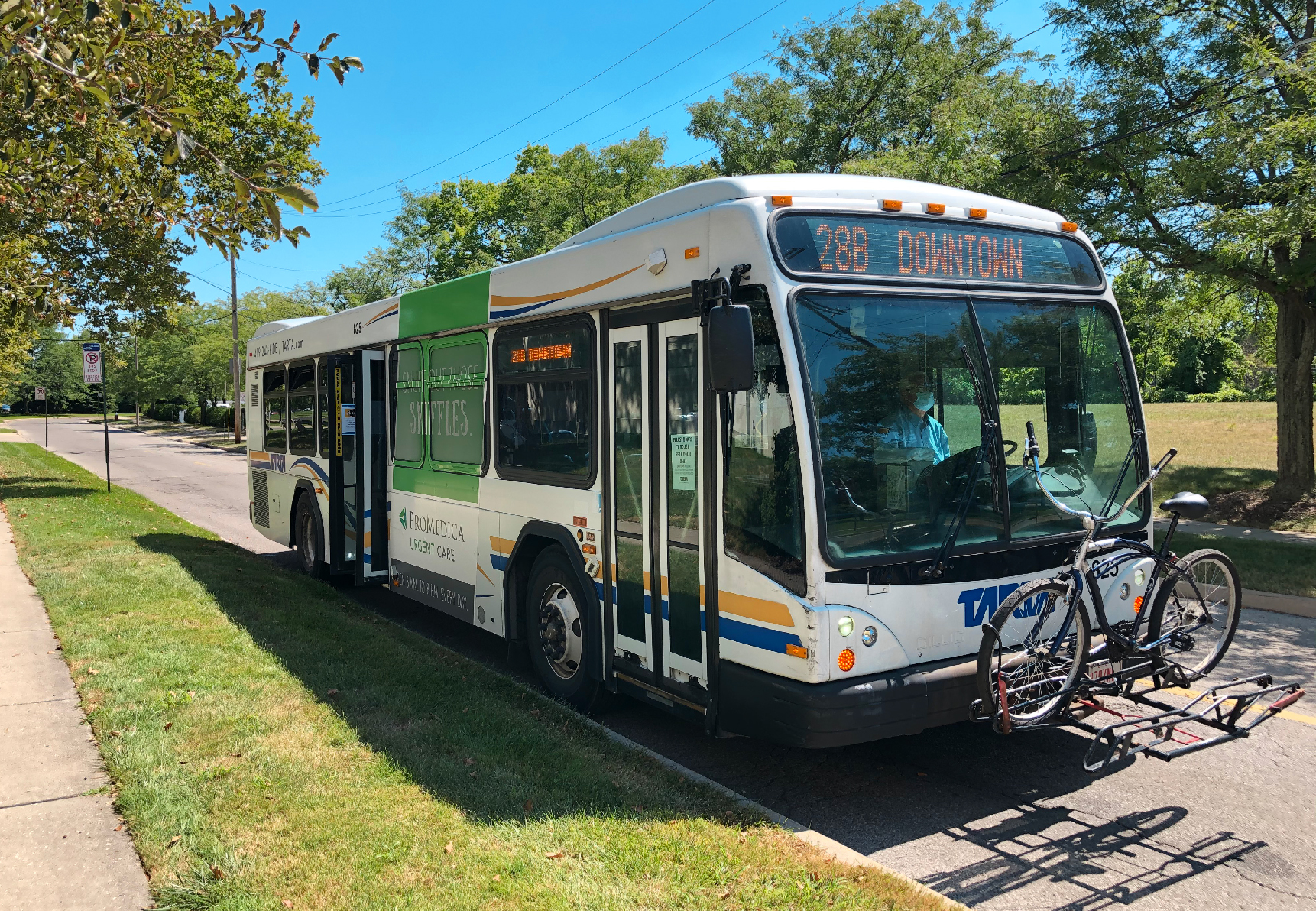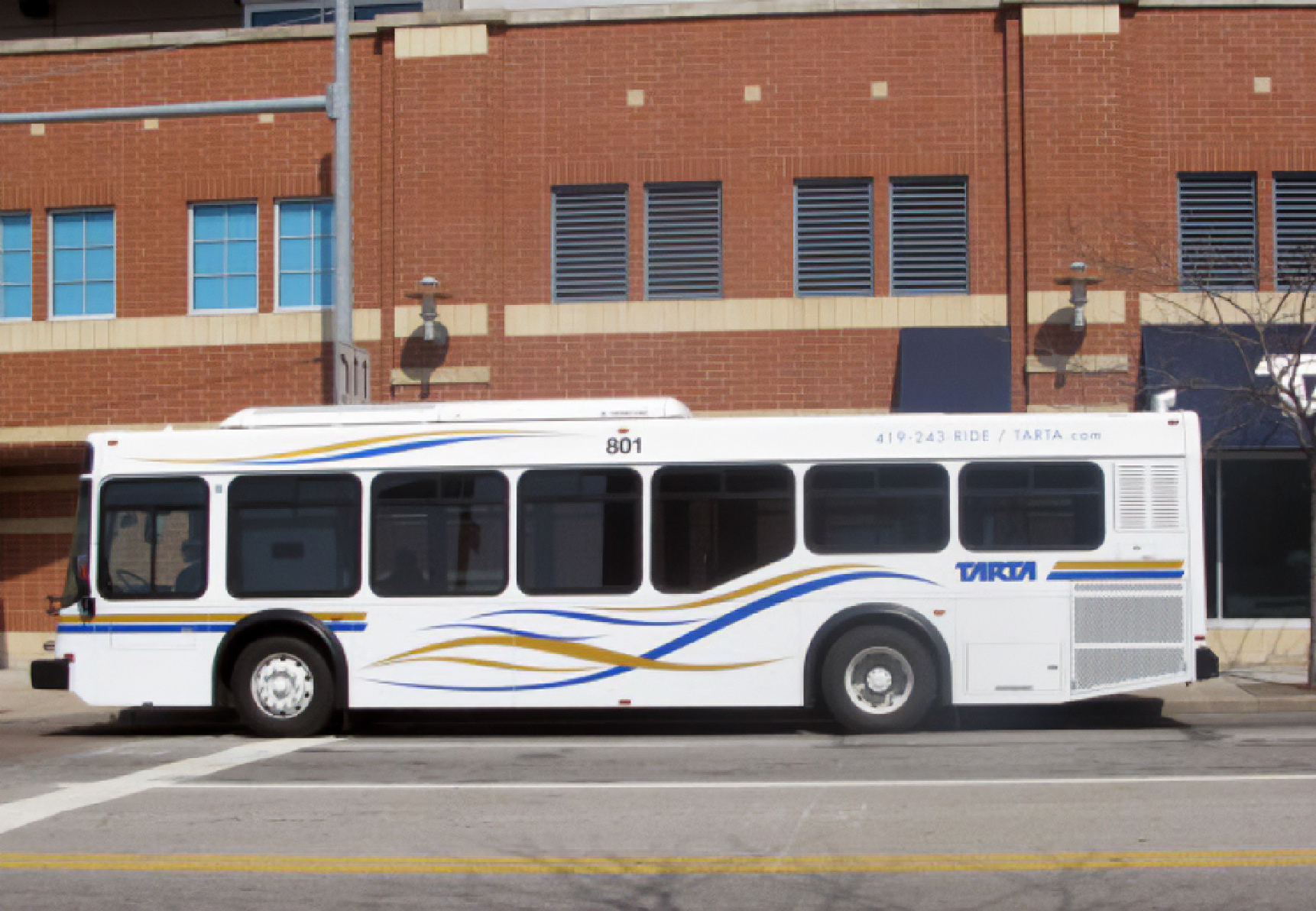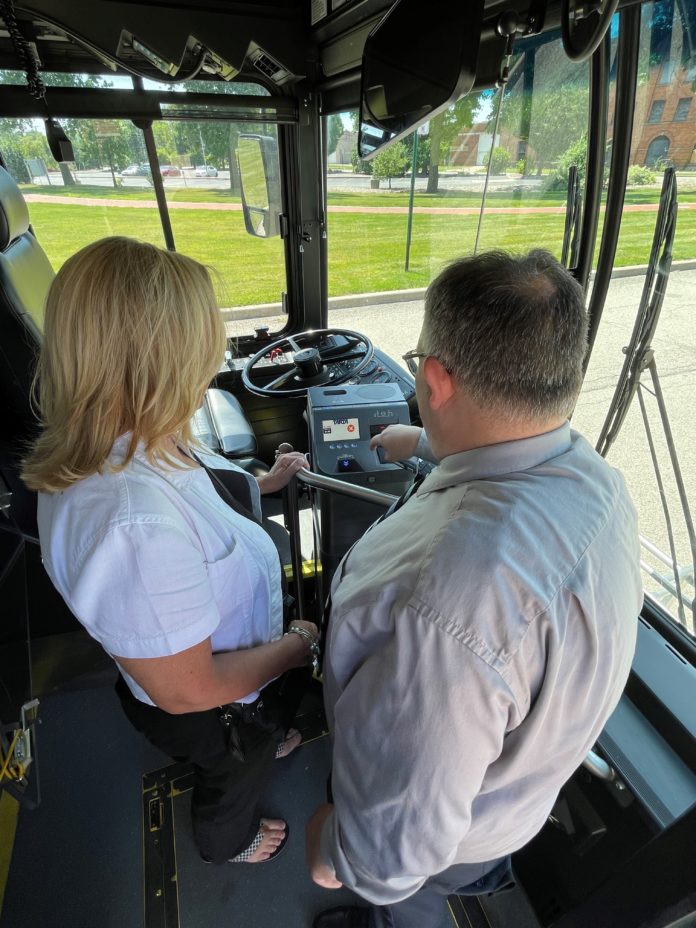
Overview
Toledo, Ohio, is a mid-sized commercial, industrial, and transportation hub located on the western tip of Lake Erie. Like its neighbors Detroit and Cleveland, it is seeking to uplift its economy and better serve its population after a long postindustrial slump. The city’s public transit agency, the Toledo Area Regional Transit Authority (TARTA), is playing a key role in revitalization efforts, actively working to make transit accessible and affordable to more riders.
In March 2020, TARTA became one of the first public transit agencies in the nation to suspend fare collection due to Covid-19, with the goal of keeping passengers and employees safe, maintaining transit access, and helping businesses retain workers and patrons. But the fare free model did not prove to be sustainable. Like other U.S. transit agencies that suspended fare collection during the pandemic, TARTA faced an increase in safety complaints and a reduction in ridership and revenue.
Meanwhile, voters in 2021 approved a sales tax funding model for TARTA and an expanded service area with the understanding that the agency would also improve its fleet, its technology, and customer experience.
With a new source of public funding and a mandate to improve, TARTA pledged to modernize its operations. TARTA Next, a comprehensive
operational analysis, became the basis for a community conversation about the future of Toledo public transport. The result was plans for more equitable, sustainable services with the aim of expanded access to transit, and increased ridership.
The agency’s goals included reinstating fast, efficient fare collection, an overhaul of the agency’s token-based fare collection system, and an expanded reduced-fare program. There was no time to lose. TARTA had promised its board and the public that new rider-facing technology upgrades would be up and running by August 1, 2022.

Project Implementation & Process
To meet its tight deadline, TARTA’s leaders worked closely with the Genfare team, led by Edward Brandis, Genfare’s Business Development Director for the Northeast. That meant quickly negotiating and executing a contract and delivering the product and the fare media in advance of the date to resume fare collection, Brandis said.
The system upgrade was handled as a sole source procurement, with Genfare as the existing vendor. TARTA and Genfare quickly negotiated the project scope price. The contract was then approved by TARTA’s board, who returned a purchase order the following day, Brandis said. Genfare had its mission in hand by February 2022 and the new fare collection system was installed and online by August 2022.
Genfare’s full-service field services team and training engineers made sure that hardware installation, system integration and training went smoothly. Field services team members connected TARTA’s new hardware to power, the internet and its AVL system, testing everything to make sure all systems were in sync, and that the transit agency could begin using its new fare collection technology on day one.
Hands-on training included a combination of in person and virtual learning for bus operators and administrative staff, including train-the-trainer learning for maintenance. In the future, TARTA can also take advantage of Genfare’s 24/7, on-demand training as needed, available through Genfare’s customer portal.

Challenges
TARTA was starting from scratch, not only in reinstating fare collection and installing new technology, but introducing the all-new fare collection system to its workers and the public.
The agency also needed new magnetic fare media that would accommodate an expanded set of reduced-fare options for key rider groups, such as veterans, seniors, and students, and facilitate free transfers and produce change for cash in the form of balance tickets. In addition, the agency had committed to providing free summer transportation for city youth and needed to quickly obtain fare media for 2,200 free Youth Summer Blast Passes.
Genfare walked TARTA’s team through the magnetic fare media production process well in advance, ensuring that the new fare media was available as soon as it was needed. The company helps to connect transit agencies to business and community groups who can benefit from equitable fare structures, and its technology supports this mission.
“Fare media has a long lead time and TARTA had not collected fares for a while,” Ed added. “But there weren’t any curveballs. We advised them on the timing and we got the system implemented and online in time for resumption of fair collection.”
The quick turnaround was facilitated by the transit agency’s well-researched plan and choice of a high performance fare collection solution, but also the close collaboration with Genfare’s experienced team members, Ed said.
“The Genfare products are that robust and mature, and our process and our people are that high quality,” Ed said. “This is the type of rollout our clients can expect.”

Results
Big changes in the TARTA rider experience were evident once the new fare collection system was in place, according to Laura, who regularly rides public transit. The new fare structure was quickly accepted by transit riders. Customers have expressed happiness with the cash and digital fare media options, and rider safety issues related to the pandemic and the fare-free model quickly improved, she reported.
The company’s hard work at community outreach and reintroduction of fares at a good value have paid off, and the changes are “incredible,” Laura added.
“Customers don’t need a free ride, they need a quality ride” at an affordable cost, Laura said.
At the same time, the system upgrade resulted in savings to the agency. Once the token-based system was replaced, TARTA not only met, but slightly exceeded its budgeted target for $1.8 million in fare collection in 2023, Laura reported.
Those savings in turn have supported continued expansion and improvements. Newer paratransit vehicles were added to the fleet, and in early 2023 TARTA expanded on-demand microtransit van services to riders who live outside the bus transit service area. The agency was able to make good on its pledge to voters in a short timeline.

Takeaways
Genfare advises transit agencies that equitable, accessible mobility means meeting riders where they are. Affordable fare structures are a crucial part of a transit system that attracts today’s riders.
The numbers highlight the need for this forward-thinking strategy. More than half (55%) of transit riders in the United States earned under $50,000 in 2022, according to the American Public Transportation Association. In the Toledo area, 81% of transit riders had a household income of $25,000 or less in 2019, with 41% of commuters earning $10,000 or less, TARTA has reported. In addition, over half of households in the Toledo area who commute via transit do not have access to a vehicle.
A fare system that uses adaptable, efficient technology gives riders, including unbanked riders, easy access to affordable fares that make regular ridership possible. Fast Fare fareboxes allow agencies to continue accepting cash alongside the convenient digitization of cash to card-based or account-based fare media. In this way, agencies can set up fare collection systems that make it easy for cash-paying riders to take advantage of fare capping, transfers and other equitable fare structures.
“Paying a fare increases the perception of the value of transit,” according to Larry Chefalo, Genfare’s Business Development Director, Central Region. “Some agencies who adopted universal free fares during the pandemic experienced an explosion of non-destination riders. Safety, cleanliness, and quality of service complaints went up, deterring choice riders and making it more difficult to recruit bus and train operators.”
“A well-structured fare system that is easily accessible to residents and community partners will ensure that access to transit services can be provided to all eligible riders, particularly for those who qualify for reduced- or no-fare privileges,” Larry continued.
In addition, the less money agencies spend collecting revenue, the more funding is available for expanding or improving service. Transit agencies of all sizes are facing rising operating costs across the board, while operational funding is diminishing along with revenue collected. Investing capital funds in a fare collection solution that lets transit agencies keep more of each dollar collected at the farebox is one key way to reduce operating costs.
The results of TARTA’s fare collection upgrade validate that agency’s efforts to carefully research the needs of its current and potential transit customers and to educate and inform the public about its resulting service improvements, Laura said. The agency needed to modernize in order to welcome the improvements that the new fareboxes have brought to the rider experience, she said. Now, fare collection for customers, operators and the agency “is so much easier.”
Journey with Genfare
We want to elevate transit, not just for riders, but also for the agency and the whole community. Learn how Genfare can help your agency increase ridership and raise revenue with our simplified, empowered, and connected equitable mobility solutions.


